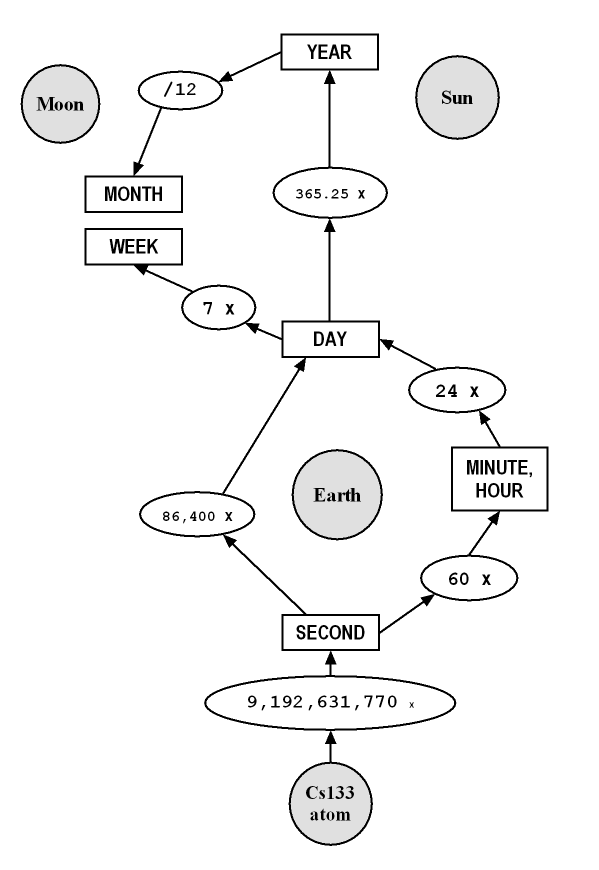Units of time
We have a number of units of time used in daily life and in science, ranging from the Planck time unit, the smallest meaningful period of time which can theoretically occur, to measurements spanning arbitrarily large amounts of time. For the problem of timekeeping, those units under a day, and perhaps as small as a second have historically been the focus. With the advent of new technologies in the past century, we have been able to concern ourselves with ever smaller measurements.

This diagram shows the most common units of time, with the conversions between them, loosely grouped by the natural system defining their length.
The second is the SI unit of time. Everybody is familiar with its classical definition; 60 seconds in a minute, 60 minutes in an hour, and 24 hours in a solar day. For practical purposes, this is a good definition. It was deemed by the General Conference on Weights and Measures that the solar day cannot be measured to an acceptable level of precision to be included as a pillar of the SI system. They redefined the second to be 9,192,631,770 periods of an atom of cesium-133 at 0 K, due to the greater reproducibility of consistent results atomic measurements offer over astronomical ones.
Previous Next